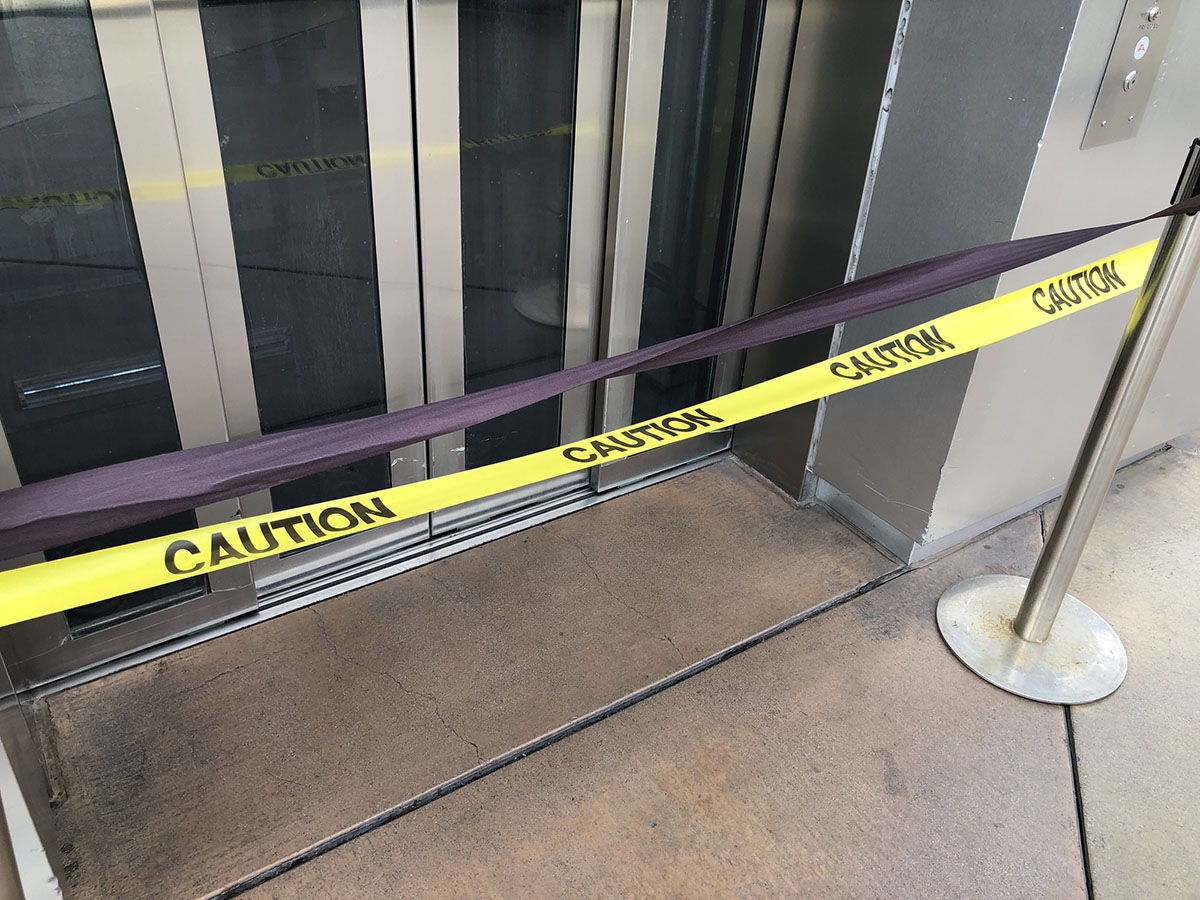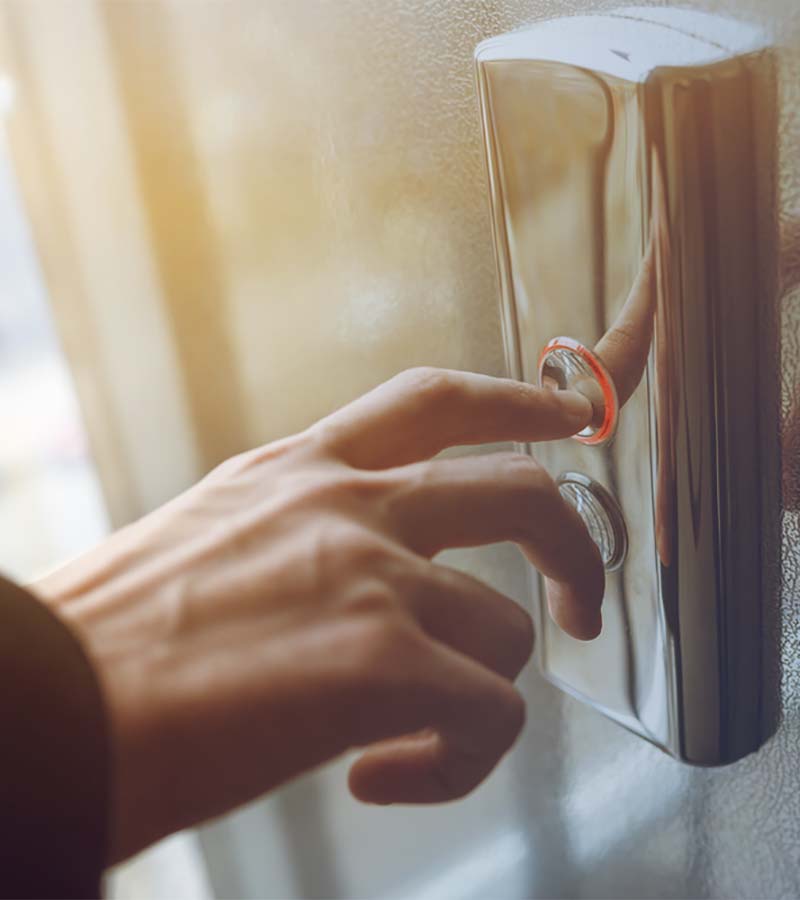Free Case Evaluation
Fill Out The Form Below To Find Out If You Have A Case.
Thank you for contacting us. One of our colleagues will get back to you shortly.
NYC Elevator Accident Attorneys
Statistics provided by the New York City Department of Buildings state that there are more than 70,000 elevators and escalators in New York City.
Elevators are indeed ubiquitous. Fortunately, elevator accidents are not very common events. In New York City, the Department of Buildings has a record of 104 accidents in 2010, 97 in 2011, 108 in 2012, 107 in 2013 and 89 in 2014. This impressive safety record may be the fruit of advancing technology, stringent laws, and to some degree, municipal vigilance.
But elevator accidents do occur. Some accidents involving elevators may not be reported. No doubt, the public is aware of many of the most newsworthy cases. This past year (2016) saw a very significant elevator accident involving a baby and her mother who plunged into an open elevator shaft at 3415 Neptune Avenue in Sea Gate, Brooklyn. In 2011, a woman was killed in Manhattan when an elevator took off while she was entering the elevator. If you perform a simple “You Tube” search, you can find incidents of truly horrific elevator accidents around the globe.
The New York City Department of Buildings lists the “top elevator offenders” utilizing data which includes records of violations as well as the records of New York City field inspectors. The department has set up a unit called the “elevator unit” which is charged with the responsibility to oversee the proper maintenance of elevators in the City of New York. The stated purpose of the unit is to support the safety and reliability of elevators in the City of New York.
It is important to call 311 if you see or hear of any defect in the operation of an elevator in New York City. This will ensure that the City of New York will assign an inspection and hopefully that action will result in a quick resolution of a problem before an accident occurs.
The elevator enforcement program pursues landlords who have persistent elevator problems. For example, as of July 7, 2017 there were three listed “top owner offenders”: 540 Jackson Realty Corporation for 540 Jackson Avenue, Bronx, New York; 301 Management LLC for 1839 University Avenue, Bronx, New York (referred to HPD emergency repair program); and 653-657 LLC for 657 Crotona Park North, Bronx, New York (referred to HPD emergency repair program). The elevator unit has many functions including enforcement, accident investigations, periodic inspections, surveys, and complaint inspections.
Notwithstanding oversight, there are landlords that do not adequately maintain certain elevators. Accidents do occur. Misleveling of elevators are commonly seen. Accidents caused by this condition may be actionable under certain circumstances. We have handled matters involving sudden drops and movements by elevators which was caused by negligence. A poorly maintained and malfunctioning elevator can be transformed from an instrument of convenience to one of hazard and danger.
Landlords are mandated to promptly report to the New York City Department of Buildings any elevator accident resulting in personal injury and requiring the treatment by a physician. They must notify the City of every accident before they commence repairs. The Department of Building is required to conduct an immediate and full investigation. Upon completion of the investigation they must prepare a full and complete report of their findings. Any parts taken from the elevator after an accident must be approved in advance by the Department of Buildings.
There are unfortunately elevator accidents involving elevator workers as well. This may be caused by broken or inadequate ladders, lack of safety equipment, improper or inadequate guardrails, or other work safety equipment inadequacies. Such accidents may also be actionable.

Common Types of Elevator Injury Cases
Elevators are generally a safe and predictable way to travel within a building or a complex. Yet each year elevator-related negligence is responsible for 27 deaths and thousands of serious injuries across the US.
That may surprise most people, who view elevators as slow moving and harmless. While elevators may not injure people in great numbers, the impact of an injury may be quite severe. Elevators are heavy and can move with surprising velocity when malfunctioning, creating potentially lethal force. Falling, whether from a snapped cable or into an open elevator shaft, is also a potentially fatal hazard with elevators.
Elevator injury litigation, therefore, comes in a variety of forms. Here are a few of the most common types of cases:
- Sudden acceleration or deceleration
- Caught in between. If an elevator gets stuck or the door won’t open, sometimes people attempt to pry open the door — a potentially deadly move if the elevator quickly resumes moving.
- Poor leveling
- Moves too fast for safe operation
- Damaged or improperly maintained cables
- Failure to move or open (stuck inside)
- Phone (communication) failure
- Defective governor
Many of these problems can be easily identified and remedied with proper inspection and maintenance. Unfortunately, not all building owners follow proper servicing, installation and inspection protocols, leaving the public at risk.
How to Prove Liability
To prove that there was negligence related to the installation, maintenance, inspection or operation of an elevator, an attorney will attempt to recover the following items:
- Witness statements or video recordings that document the objective circumstances of the accident.
- Work and safety records for the elevator where the injury occurred.
- Maintenance records for the elevators in the building.
- Inspection and testing documents for the elevators on the property.
- Service reports and repair recommendations.
- Service records.
- Maintenance logs.
- The identity of those tasked with maintaining, servicing, installing or inspecting the elevators on the property.
By collecting these items, an attorney who is experienced with elevator injury litigation will be able to build a compelling, factual case rooted in strong evidence.
If you or a loved one has been involved in an elevator accident, promptly contact us for a free case evaluation. Any potential lawsuit should be preceded by a very thorough and complete investigation. It is very useful that this be done as soon as possible after an accident in order to preserve evidence and locate witnesses.

Verdicts & Settlements
- $8 Million for Pedestrian Knockdown Case
- $3 Million for Lead Poisoning Case
- $3 Million for Pedestrian Knockdown Case
- 2.6 Million for Lead Poisoning Case
- 2.2 Million for Lead Poisoning Case
- 2 Million for Lead Poisoning Case
- 1.875 Million for Defective Product Case
- 1.5 Million for Lead Poisoning Case
CLIENT TESTIMONIAL
Frankel Law Firm was extremely professional. They were very helpful with every step of the process, always reachable to answer questions and give excellent advice. They were a pleasure to work with!